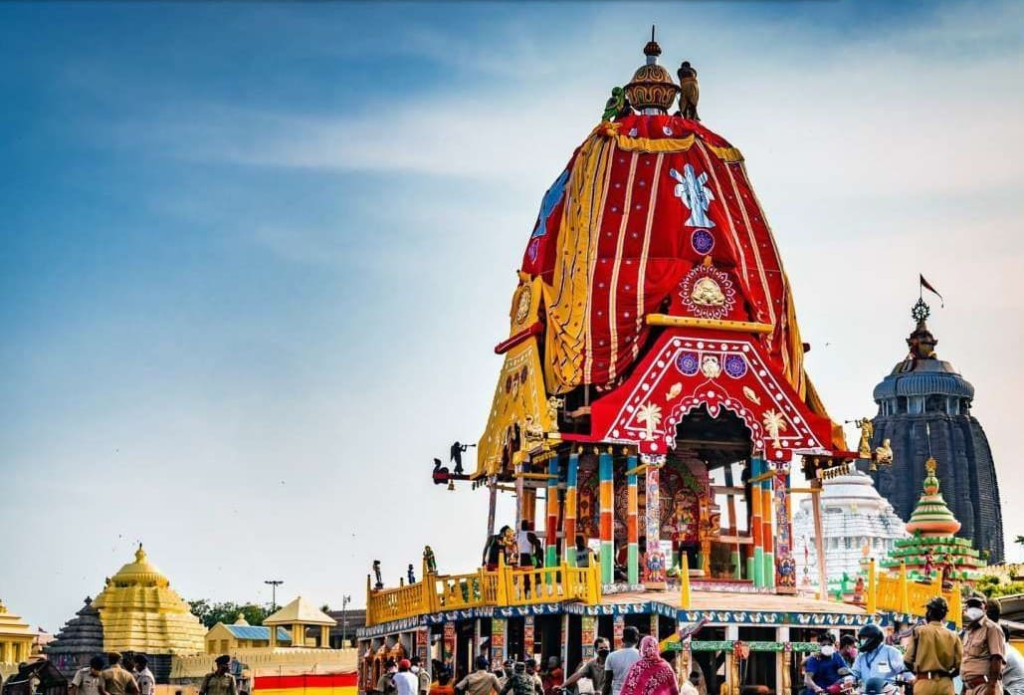
The Chariot Rolls Across Continents, Carrying Faith, Culture, and a Global Spirit
Table of Contents
- Introduction: From Puri to the Planet
- Why Rath Yatra Travels So Far
- The Essence of the Festival: What Makes Rath Yatra Universal
- United States: Cultural Melting Pot Meets Spiritual Tradition
- United Kingdom: A Regal Celebration of Devotion
- Australia & New Zealand: Down Under, But Deep in Devotion
- Africa: Tradition Meets Community in Colorful Processions
- Southeast Asia: Shared Heritage, Shared Devotion
- Global Symbols, Local Colors: How Each Nation Adds Its Flavor
- Final Thought: A Festival that Belongs to the World
1. Introduction: From Puri to the Planet
Rath Yatra may have originated in the sacred city of Puri, but its wheels haven’t stopped there. The colossal chariots of Lord Jagannath have rolled their way into hearts across continents. From Times Square to Trafalgar Square, Rath Yatra has emerged not just as a regional ritual but as a global celebration of spirit, devotion, and shared culture.
2. Why Rath Yatra Travels So Far
What allows a deeply Indian festival to cross so many cultural, geographic, and linguistic boundaries? The answer lies in its universal appeal:
- Symbolism of journey and renewal
- Inclusiveness—everyone can pull the chariot
- Visually stunning rituals
- Global Indian diaspora and ISKCON’s efforts
This festival doesn’t ask you to belong by birth—it invites you to connect by belief.
3. The Essence of the Festival: What Makes Rath Yatra Universal
At its heart, Rath Yatra is about bringing the divine into the world—literally. Lord Jagannath steps out of the temple and rides among his people. This symbolic journey resonates deeply across cultures:
- The divine walking among mortals
- The power of communal celebration
- Movement as a metaphor for spiritual progress
No wonder cities across the globe have adopted Rath Yatra, infusing it with their own local soul while preserving its ancient spirit.
4. United States: Cultural Melting Pot Meets Spiritual Tradition
In cities like New York, San Francisco, Los Angeles, and Atlanta, Rath Yatra is celebrated with grandeur.
Highlights:
- Vibrant parades with giant chariots on major avenues
- Bhakti yoga, kirtan performances, and free vegetarian feasts
- Interactive cultural exhibits and devotional concerts
Organized primarily by ISKCON, these events draw not only the Indian diaspora but curious locals and global tourists, blending ancient rituals with contemporary energy.
5. United Kingdom: A Regal Celebration of Devotion
In London, the Rath Yatra festival graces the iconic Trafalgar Square, parading down the city’s historic streets. Even British royals and city officials have acknowledged its cultural and spiritual significance.
What makes UK Rath Yatra unique:
- Integration into multi-faith community festivals
- Media coverage and mainstream participation
- Performances by schools and cultural groups
The UK’s long-standing Indian community ensures that the Rath Yatra is both deeply authentic and widely inclusive.
6. Australia & New Zealand: Down Under, But Deep in Devotion
Cities like Sydney, Melbourne, and Auckland host Rath Yatra festivals that have become major calendar events.
Key elements include:
- Beachside chariot pulls and family picnics
- Sanskrit workshops, Vedic philosophy talks
- Cultural shows featuring Indian classical dance and drama
These events are often community-run, spotlighting the harmonious blend of heritage and homeland for the Indian diaspora.
7. Africa: Tradition Meets Community in Colorful Processions
In countries like South Africa, Kenya, and Mauritius, Rath Yatra has found a loyal and passionate base.
- Durban hosts one of the largest Rath Yatra festivals outside India, complete with floats, food fairs, and spiritual discussions
- Nairobi and Mombasa celebrate with street processions, devotional music, and youth cultural competitions
- The festival is often seen as a symbol of unity in diversity, bringing together people of many ethnic backgrounds
8. Southeast Asia: Shared Heritage, Shared Devotion
In Thailand, Malaysia, Singapore, and Indonesia, Rath Yatra carries historical and spiritual roots.
- Southeast Asian architecture and iconography already mirror Hindu traditions, making Rath Yatra feel native, not foreign
- Singapore’s Little India becomes a spiritual hub during the festival, with public chariot parades and temple rituals
- Bali observes traditional Hindu celebrations with a Rath Yatra that feels both ancient and local
These celebrations are a beautiful fusion of Indian roots and Southeast Asian identity.
9. Global Symbols, Local Colors: How Each Nation Adds Its Flavor
While the Jagannath triad and chariots remain constant, each country adds its cultural flavor:
| Country | Local Twist |
| USA | Yoga workshops, food fests, spiritual rock bands |
| UK | Interfaith prayers, poetry recitations |
| Australia | Coastal chariot routes, eco-conscious decorations |
| South Africa | Gospel-fusion kirtans, unity processions |
| Singapore | Community stage shows, Rath Yatra-themed fairs |
These adaptations don’t dilute the tradition—they enrich it. The soul of Rath Yatra remains timeless, even as the expression changes with geography.
10. Final Thought: A Festival that Belongs to the World
Rath Yatra may begin in Puri, but it belongs to no one place—it belongs to everyone. It’s a festival that doesn’t stay still. It moves—on wheels, in hearts, across oceans, through generations.
Whether you’re pulling a chariot in Odisha or dancing in the streets of London, you are part of a spiritual caravan that transcends borders. In a world often fragmented by difference, Rath Yatra reminds us that faith unites, celebration heals, and devotion travels far.

